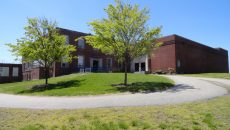Connector Staff
With UMass Lowell strewn about the entire city, having just one academic campus to service all majors is an impossible idea. The geography and existence of private homes and businesses between North and South Campus stop any thoughts of physical University unity, and, because of this, it seems the two campuses have minds of their own, instead of each being an essential part of a whole.
North Campus, with information provided by U.S. News & World Report, has the advantage in terms of major popularity, with UMass Lowell’s most popular majors being business (17% of students) and engineering (15%). Roughly one third of UMass Lowell’s students belong to these two North Campus majors alone, and the gender splits, with 63% of UMass Lowell students being male, 37% female (as provided by UMass Lowell Statistics), demonstrates that it is a heavily male, math and science-oriented University.
North Campus serves the math and science departments, while South Campus is home to the humanities, health fields and social sciences. Both academic campuses are built to provide everything their majors will need, requiring not only unique facilities and buildings, but also, distinct cultures, feelings and personalities of their own, it seems.
“There are obvious reasons for the different feel between North and South Campus, like North having their reputation as the business and STEM majors’ campus, and South being the arts and humanities campus,” says Malinda Reed, an English literature major who lives in Bourgeois Hall on East Campus. “But other factors, like South having a dining hall and dorms, contribute to it feeling more welcoming and comforting.”
Grass and trees abound on South Campus, and, with Mill City Restaurant scheduled for demolition and McGauvran Hall, under construction, set to replace be the new dining hall and student lounge, South Campus will only grow more unique. North Campus, meanwhile, is notable for its large, clustered buildings, underground tunnel, and the nuclear reactor. South Campus is full of green space, and North is busy, active and bustling.
“I’d say the biggest difference between North and South is obviously the fact that North has only classes, where South has both classes and dorms. To me, I’ve always seen South as a relaxing campus and it’s one of my favorite campuses to live on,” says Jake Swain, a civil engineering major who lives on South in Riverview Suites. “North Campus, as well as South, is a great campus to have classes on… it gives you plenty of places to study, do homework, and gives a great college feel to the University. Each campus has its perks, but I think once the new dining hall is opened on South and the old one is gone, South Campus will be the most welcoming and peaceful campus at this University.”
Seemingly, not much else could be different between the two campuses, and their differences are reflective of the unique students they each serve; or perhaps each student body internalizes the feeling of being unique from the other campus, and a biased attachment to their academic campus, and the disciplines involved in each, takes hold. But maybe the uniqueness of each academic campus is worse for us students than it seems.
To expand on this further and into the realm of professors, Dr. Todd Tietchen, an English professor, believes that the separation of the campuses has negative effects on both the classes offered, and the conversations it allows students to have. Instead of remaining ideologically separate, the University could do more to foster better relations between the two campuses’ disciplines.
“I’m leery about dividing knowledge up into disciplinary clusters to begin with, just because I think when we try to talk about various kinds of problems, like global climate change, it’s probably necessary for all of us to be able to talk about it across disciplines,” Dr. Tietchen says.
Speaking from his experiences teaching Literature on Technology and Human Values, a class taught on both campuses, Dr. Tietchen says, “When you bring all of those students together, and you have them discuss literature and technology together, the conversations end up being quite energizing and inspiring and thought-provoking. It’s important for students in STEM to think about what some of the cultural or ethical implications are of the kinds of innovations that they’re invested in, but it’s also important for students in the humanities or social sciences to think about ways in which innovations in STEM are going to, maybe, change the expressive culture that they work in, in ways that are interesting and fascinating too. When students are divided in disciplines, or on campuses, it keeps us from having that conversation. I think as a University it’s an increasingly important conversation for us to have.”



